Samsung hasn’t been shy about flaunting the cameras on its new phones. It even wrangled endorsements from acclaimed directors Ridley Scott and Na Hong-jin during its Galaxy S23 announcement. However, in a surprising move for Samsung, the camera plays second fiddle to battery and performance upgrades in the new Galaxy S23 and S23 Plus.
The Galaxy S23 ($800, £849, AU$1,349) and Galaxy S23 Plus ($1,000, £1,049, AU$1,649), which are available today alongside the $1,200 Galaxy S23 Ultra (£1,249, AU$1,949), feel like a half-generation upgrade compared to last year’s Galaxy S22.
Performance is faster, and battery life is thankfully a bit longer, which addresses the biggest complaint I had about the Galaxy S22. But unlike the Galaxy S23 Ultra’s cameras, which have noticeable improvements in color tone and dynamic range along with a new 200-megapixel sensor, the Galaxy S23 and S23 Plus’ cameras largely feel the same as last year.
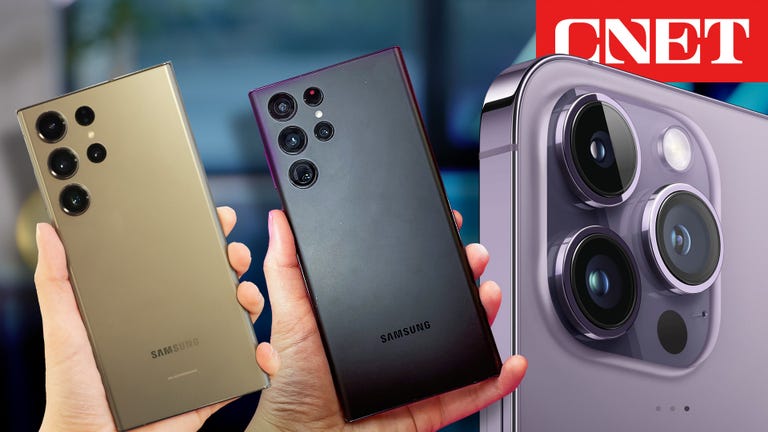
Watch this: Samsung Galaxy S23 Ultra, S22 Ultra, iPhone 14 Pro Max: How Do They Compare?
08:34
And that’s OK. We’re past the point of revolutionary annual upgrades, and the Galaxy S23 is the perfect example of that. Instead, Samsung focused on making practical refinements to one of the areas that matters most in a phone: how long it lasts on a single charge. Still, you shouldn’t upgrade to the S23 or S23 Plus unless your phone is more than two years old since it’s not a radical change.
One of the Galaxy S23’s biggest drawbacks, however, isn’t a flaw with the phone itself, but rather the tough competition from Google. The $899 Pixel 7 Pro falls in between the Galaxy S23 and S23 Plus pricewise and offers a stellar camera that bests Samsung’s in some scenarios. Samsung, however, does offer compelling trade-in bargains that could make the S23 lineup more compelling.
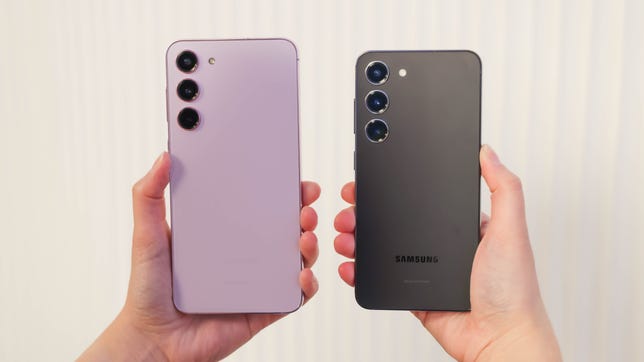
Like
- Attractive design
- 4 generations of Android OS updates
- Longer battery life than the Galaxy S22
- Fast performance
- More storage in the base S23 Plus
Don’t like
- Cameras are basically the same as last year
- Expensive
- No improvements to fast charging
- Regular Galaxy S23 lacks base storage upgrade
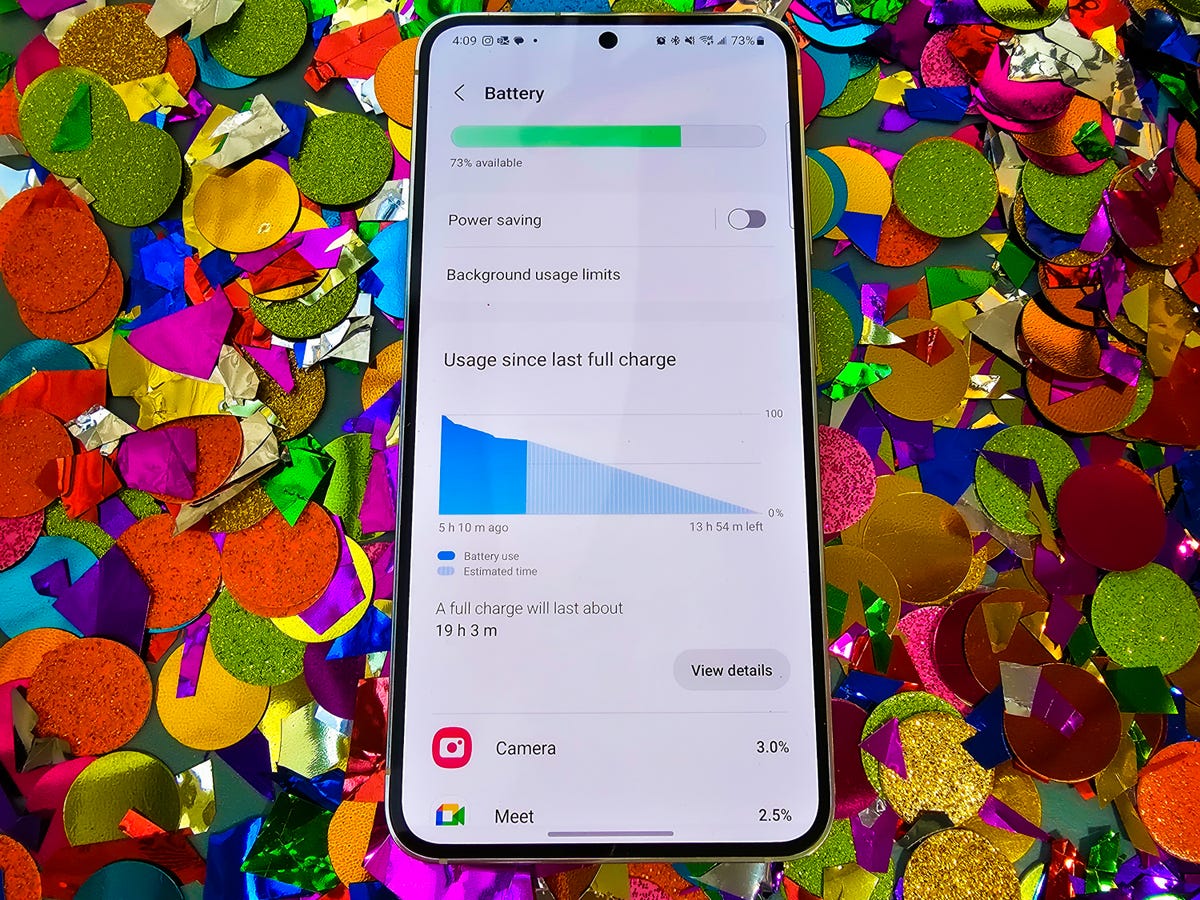
The Galaxy S23 has a bigger battery than its predecessor.
Like the Galaxy S22, the 6.1-inch Galaxy S23 remains a top choice for Android fans that prefer smaller phones. But there was just one problem with the Galaxy S22: Its battery life sometimes felt too short to get through a full day.
It looks like Samsung took these concerns to heart. Both the regular Galaxy S23 and the larger 6.6-inch Galaxy S23 Plus get a longer battery life compared to their predecessors. The Galaxy S23 has a 3,900-mAh battery, up from the Galaxy S22’s 3,700-mAh capacity, while the Galaxy S23 Plus has a 4,700-mAh battery instead of the S22 Plus’ 4,500-mAh battery. The new Qualcomm Snapdragon 8 Gen 2 processor inside the Galaxy S23 series, which has been optimized for Samsung’s new phones, should also bring some improvements to power efficiency.
Even though I’ve only used the new phones for a few days, these upgrades are already noticeable. When I used the 6.1-inch Galaxy S22 as my daily smartphone for roughly a month, I noticed that the battery dipped down to between 30 and 40% by 9 p.m., especially after a long day in the office.
With the Galaxy S23, the battery was down to 46% by 9:45 p.m. after a day of heavy usage (running benchmark performance tests, taking lots of photos and videos, etc.). With light usage after a day that started at 10 a.m, I had 64% left by the time I went to sleep just past 12:30 a.m. The Galaxy S23 Plus had 73% of its battery left by bedtime (around 11 p.m.) after a full day in the office.
Of course, battery life will vary depending on how you use your device. Tasks like making video calls and recording video will drain the battery faster, and settings such as screen brightness typically impact battery life. During my tests, I usually had the screen set between 25% and 50% of the phone’s maximum brightness; since Samsung’s phones have fairly bright screens, there’s usually no need to set it any higher.
I also tested the battery life by putting each phone through a 45-minute endurance test to see how quickly the battery drains after routine tasks like scrolling through social media, watching YouTube videos, playing games and making a video call. The Galaxy S23 dipped to 91% after that test, while the Galaxy S23 Plus decreased to 95%. Both scores represent a mild improvement over the Galaxy S22 and S22 Plus, which reached 89% and 92%, respectively.
To get a more thorough sense of the Galaxy S23’s battery life, I also ran a three-hour YouTube streaming test in which I cranked the display brightness all the way up while watching a video and measured the battery level at every hour. As you can see in the table below, the Galaxy S23 and S23 Plus fared better than their predecessors during these tests, especially by the end of the third hour. Both phones also beat the Galaxy S22 Ultra in this test, and the Galaxy S23 matched the performance of the $599 Pixel 7.
Galaxy S23 vs. S22 and Pixel, battery test
While battery life improved, the Galaxy S23 and S23 Plus have the same charging speeds as last year. The Galaxy S23 supports 25-watt fast-charging and 45-watt fast-charging for the Galaxy S23 Plus. But in practice, those charging speeds didn’t feel that different. The Galaxy S23 went from 47% to 86% after 30 minutes, while the Galaxy S23 Plus went from 59% to 94%.
While charging speed isn’t a deal-breaker when buying a new phone, it would have been nice to see Samsung push forward in this area. That’s especially true considering rivals like Xiaomi and OnePlus continue to shorten the time it takes to replenish their respective phones’ batteries.
Galaxy S23 and S23 Plus’ new processor is fast
Geekbench 5 Single Core 1,518 1,179 1,730 1,880 1,028 1,160Geekbench 5 Multicore 4,789 3,233 4,624 5,488 3,244 4,8403DMark Wild Life Extreme 3,838 2,509 2,777 3,364 1,829 3,700
- Galaxy S23
- Galaxy S22
- iPhone 14
- iPhone 14 Pro
- Pixel 7 Pro
- OnePlus 11
3DMark FPS 22.9 15 16.6 20.1 11 22.2
- Galaxy S23
- Galaxy S22
- iPhone 14
- iPhone 14 Pro
- Pixel 7 Pro
- OnePlus 11
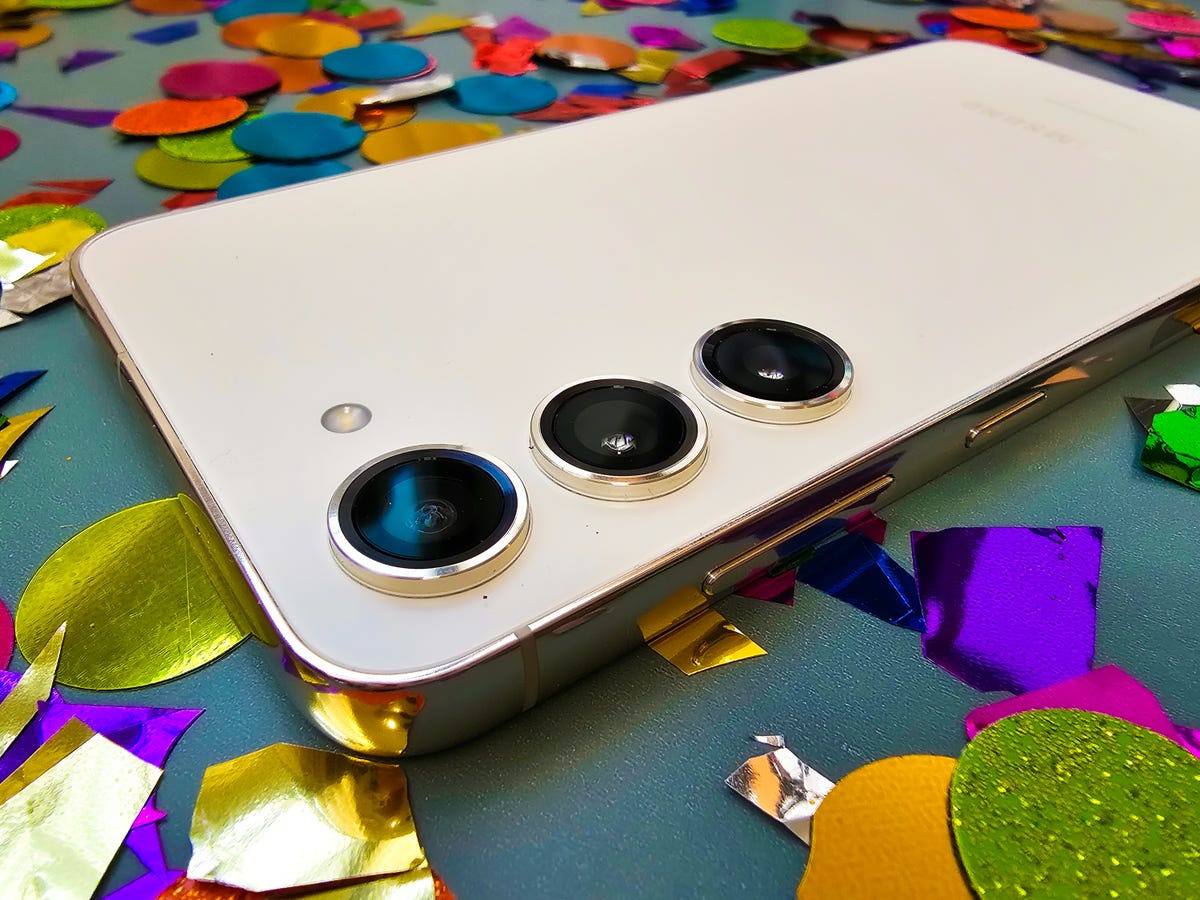
The Galaxy S23’s camera is very similar to the Galaxy S22’s.
The Galaxy S23 and S23 Plus each have a triple rear camera that consists of a 50-megapixel main camera, 12-megapixel ultra wide and a 10-megapixel telephoto. Thanks to a technique called pixel binning, you can choose to shoot photos at the full 50-megapixel resolution or 12 megapixels depending on the scenario. The 12-megapixel option, for example, is usually better for poorly lit circumstances since it groups multiple pixels together to serve as a larger pixel for gathering more light. Samsung also integrates the controls from its Expert Raw app right into the main camera, making it more convenient for those who want easy access to the full, uncompressed version of an image.
This camera system is largely the same as the one on the S22, although Samsung has made some processing improvements, particularly when it comes to low light photography. That’s the biggest difference I noticed during my time testing the new phones against the Galaxy S22.
Check out the photos of my husband in a dim restaurant below. His face is brighter and his beard is more detailed.
Still, I preferred the iPhone 14’s and Pixel 7 Pro’s images, mostly because they captured more accurate skin tones. The Galaxy S23’s photo is brighter and more detailed than the Pixel 7 Pro’s, but it also makes his face look a little washed out.
The Galaxy S23 performs well in dim conditions overall, which isn’t surprising considering low-light photography has been a big area of focus for Samsung in recent years. Even though the iPhone 14 and Pixel 7 Pro performed better in the examples above, the S23 easily challenges Apple and Google in other low-light photography scenarios, like taking photos of pets and still objects.
In the photos of a book stack below, for example, the Galaxy S23 did a great job at retaining detail and color. The iPhone 14’s photo isn’t as colorful and has some noise compared to Samsung’s, although the Pixel 7 Pro’s image was a close competitor.
Otherwise, there isn’t anything that feels new or surprising about the Galaxy S23’s camera. While the Galaxy S23 and S23 Plus can both capture crisp and clear images, there were instances in which colors either looked exaggerated or blown out compared to the same photos taken on the iPhone 14 and Pixel 7.
You can see an example of the exaggeration in this photo of my husband below. The shade of blue in his denim jacket is brighter than it looked in real life, while the iPhone 14 and Pixel 7 Pro’s photos look more natural.
But as I said in my review of the S23 Ultra, this isn’t always a bad thing. It can make certain photos pop and look more attractive overall, as is the case with the photo below. The pink flowers look more colorful and vibrant in the S23’s photo compared to the rest.
Samsung also upgraded the Galaxy S23’s selfie camera with a 12-megapixel sensor compared to the S22’s 10-megapixel front camera. However, I didn’t notice much of a difference under normal circumstances.
But Samsung’s phones easily took better selfies in low light compared to the iPhone 14 and Pixel 7 Pro. The photos from Google and Apple’s phones are both noisier and grainier than Samsung’s, which I noticed when comparing the photos on a large monitor. The Galaxy S23’s selfie is also a bit clearer than the S22’s, but the difference isn’t as dramatic.
The Galaxy S23 and S23 Plus have a 3x optical zoom and 30x digital zoom, just like the S22 and S22 Plus. You’ll need to splurge on the $1,200 Galaxy S23 Ultra to get the 10x optical zoom and 100x digital zoom.
But the S23 and S23 Plus still have more to offer than the $799 iPhone 14, which has a 1x optical zoom and a 5x digital zoom.
Samsung is usually the king of zoom, but in this scenario Google takes the cake. The Pixel 7 Pro has a 5x optical zoom and a 30x digital zoom that looks far crisper than Samsung’s, as shown below.
As far as video recording is concerned, the S23 and S23 Plus can record at 8K resolution up to 30 frames per second. When recording video at the highest supported resolution and frame rate for each phone (4K at 60 frames per second for the iPhone 14 and Pixel 7 Pro), I noticed the Galaxy S23’s footage had more accurate color tones compared to the Pixel 7 Pro. The iPhone’s video, however, looked a bit crisper.
I also noticed that video stabilization improved slightly on the Galaxy S23 compared to the Galaxy S22, enabling it to better compete with Apple’s Action Mode.
The Galaxy S23’s camera isn’t a leap forward, but it’ll feel significant to those upgrading from a phone that’s several years old.
Galaxy S23 and S23 Plus have a slightly new design
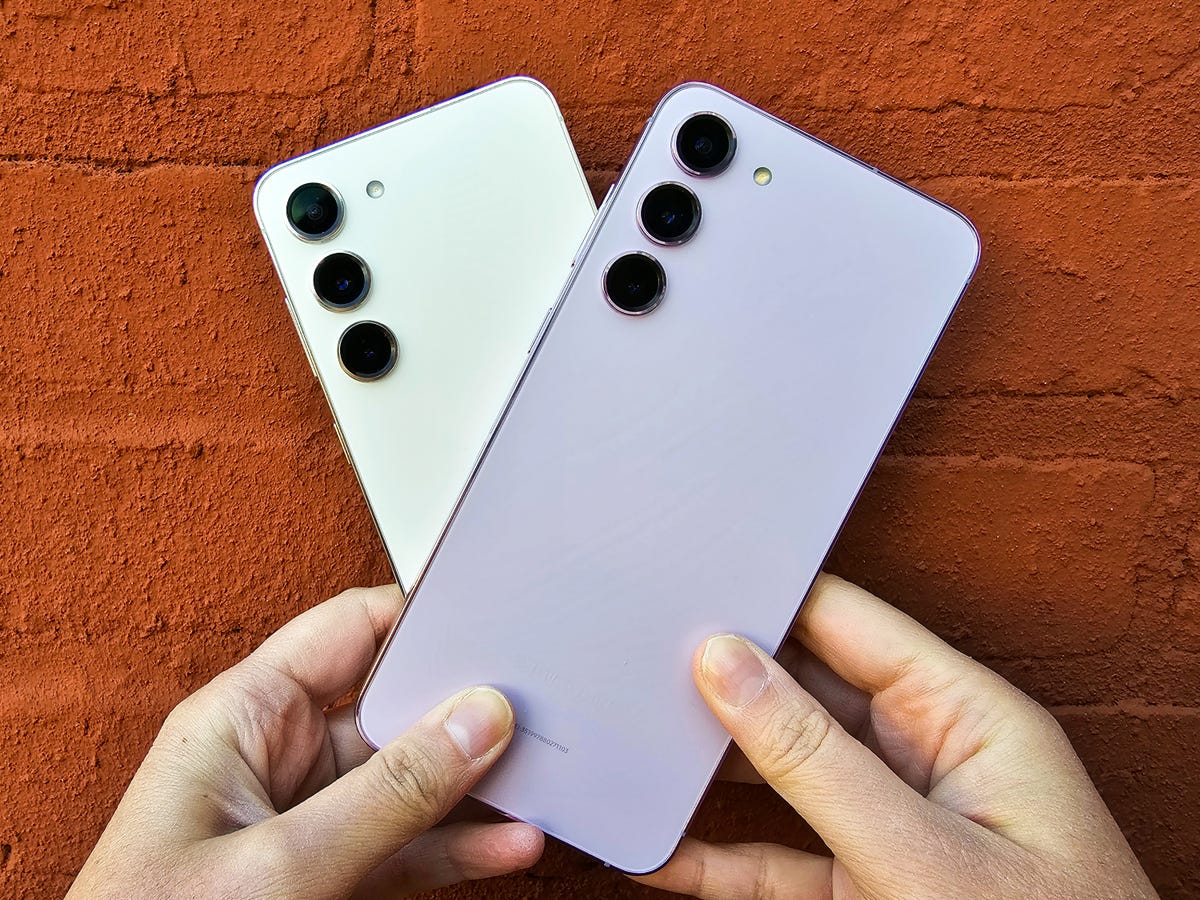
The Galaxy S23 (left) and S23 Plus.
The Galaxy S23 and S23 Plus are moderate improvements over the Galaxy S22, bringing quality-of-life improvements like longer battery life, more base storage for the Plus and faster performance. Since this isn’t a major update, I don’t recommend upgrading unless you have a phone that’s more than two years old at the very least. Those who have an older phone will get the benefits that came with last year’s camera upgrade and redesign, along with the S23’s better battery life.
If you’re shopping in the $900 price range, the Pixel 7 Pro is also worth considering. The camera generally captures more accurate colors and crisper zoom shots than Samsung’s and you get a slightly larger screen for a cheaper price than the Galaxy S23 Plus. However, just remember that Google only offers three generations of Android OS updates for the Pixel 7 line, so you might want to upgrade sooner. Both Samsung and Google provide five years of security updates for their higher-end devices, so you’ll still have years before the phones may be susceptible to vulnerabilities.
The Galaxy S22 is also a tempting option at its new price of $700. But if you can afford it, I’d recommend going for the Galaxy S23 because of its longer battery life and newer processor. Let’s face it, your phone’s battery isn’t going to get any better over time, so you might as well invest in a device that will last longer.
How we test phones
Every phone tested by CNET’s reviews team was actually used in the real world. We test a phone’s features, play games and take photos. We examine the display to see if it’s bright, sharp and vibrant. We analyze the design and build to see how it is to hold and whether it has an IP-rating for water resistance. We push the processor’s performance to the extremes using both standardized benchmark tools like GeekBench and 3DMark, along with our own anecdotal observations navigating the interface, recording high-resolution videos and playing graphically intense games at high refresh rates.
All the cameras are tested in a variety of conditions from bright sunlight to dark indoor scenes. We try out special features like night mode and portrait mode and compare our findings against similarly priced competing phones. We also check out the battery life by using it daily as well as running a series of battery drain tests.
We take into account additional features like support for 5G, satellite connectivity, fingerprint and face sensors, stylus support, fast charging speeds, foldable displays among others that can be useful. And we of course balance all of this against the price to give you the verdict on whether that phone, whatever price it is, actually represents good value.
Galaxy S23 lineup specs


